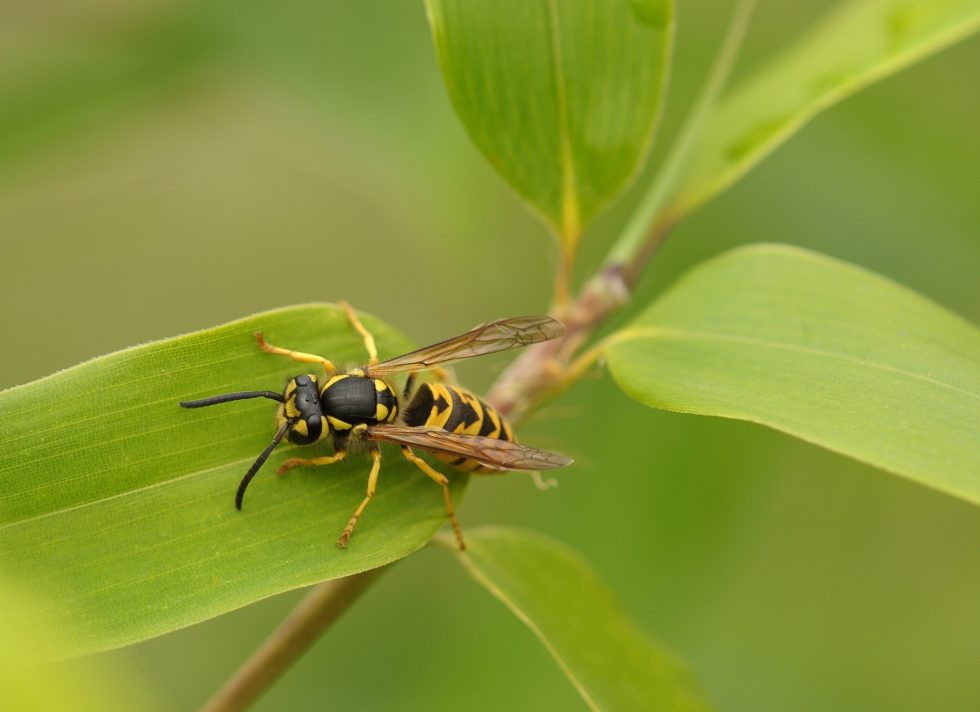When you think of “wasps”, you’re probably picturing swarms of aggressive black and yellow insects that can sting repeatedly and painfully. Those would be yellow jackets. While they can sometimes be confused with paper wasps, hornets and even bees, yellow jackets account for the most incidents of stinging every year and their colonies can contain thousands of insects.

These wasps are found all over the United States and are known as a “generalist” species, meaning they can survive in practically any environment. They are particularly abundant where humans are due to the ease of finding food and shelter to build their nests. Some types of yellow jackets use old rodent burrows to start their nests underground, while others may build them in the eaves of houses or voids in walls.
Yellowjackets usually start a new nest every year and can easily expand to over 10,000 members in one summer. Most of the workers will die off in the colder months, leaving the queens to hibernate until the next spring.
Yellow jackets can be dangerous to humans due to their aggression and ability to sting multiple times. The potentially large size of a swarm of yellow jackets can also pose a real threat. While a sting is painful, a small number will usually be no cause for concern. If you receive many stings or have an allergy to wasp venom, however, seek medical attention.
Because they build nests under the ground, yellow jackets will be a common presence in outdoor spaces and it’s not always easy to avoid them. As scavengers that eat a wide variety of foods, they are likely to attack even if their nest is not being directly threatened.
These social wasps are considered pests due to the size the colonies can grow to and the danger they pose to humans. If you have a yellow jacket nest in your yard or on your property, do not touch it or attempt to destroy it as this could cause the wasps to swarm out and attack. If you’re in Salt Lake or Utah County, contact H2 Pest Control for safe and professional wasp nest removal.
There are some things you can do to prevent yellow jackets from infesting your yard:
If you have yellow jackets on your property and you want to get rid of them, the best way to remove them is to call a professional pest control company like H2 Pest Control. Serving all across Salt Lake County and Utah County, we can identify and remove underground wasp nests safely and efficiently.
You can see how this popup was set up in our step-by-step guide: https://wppopupmaker.com/guides/auto-opening-announcement-popups/
You can see how this popup was set up in our step-by-step guide: https://wppopupmaker.com/guides/auto-opening-announcement-popups/